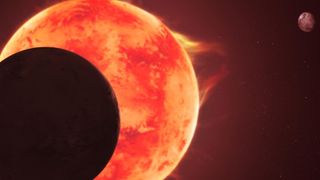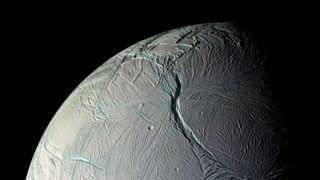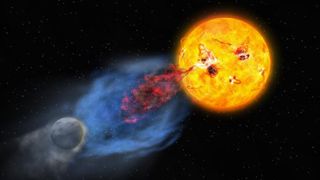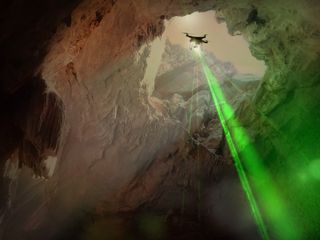Search for Life
Latest about Search for Life

Which exoplanet in the TRAPPIST-1 system could be habitable? Scientists are modeling the star to find out
By Samantha Mathewson published
Frequent flares from the nearby star TRAPPIST-1 could offer new clues in the search for habitable planets beyond Earth.

Beyond the habitable zone: Exoplanet atmospheres are the next clue to finding life on planets orbiting distant stars
By Morgan Underwood published
But being in this sweet spot doesn't automatically mean a planet is hospitable to life.

SETI's 'Noah’s Ark' – a space historian explores how the advent of radio astronomy led to the USSR’s search for extraterrestrial life
By Gabriela Radulescu published
An expert dives into the history of radio astronomy and the search for life beyond our Earth.

Scientists want to search for life in this double star system devoid of giant exoplanets. Here's why
By Kiona N. Smith published
The giants might've been kicked out, left to live a rogue lifestyle.

Planets may make their own water as they form — could that mean more habitable worlds in the universe?
By Sharmila Kuthunur published
New lab experiments suggest that water may not be a rare visitor delivered by chance but rather a fundamental ingredient woven into the process of planetary birth.

Heat leaking from Saturn's ocean moon Enceladus bolsters its case as an abode for life
By Keith Cooper published
Excess heat detected at Saturn moon Enceladus' north pole helps to account for a finely balanced energy budget that keeps the moon's ocean liquefied. What could this mean in the search for life?

Powerful solar storms may help life get going on alien planets. Here's how
By Keith Cooper published
New observations of a volatile young star have shown how infant suns could unleash enough energy to trigger biologically relevant chemical reactions in an orbiting planet's atmosphere.

Could these mysterious flashes of light in 1950s photos be UFOs? Some researchers think so
By Keith Cooper published
Researchers claim flashes of light seen in sky surveys could have been UFOs drawn to Earth by nuclear tests, but more mundane explanations should be explored first.

The search for life: A space science quiz
By Kenna Hughes-Castleberry published
This quiz dives into the historic and scientific journey behind the search for life in the universe—testing your knowledge of the thinkers, missions, and discoveries that shaped our cosmic curiosity.

Space radiation can produce some organic molecules detected on icy moons
By Javier Barbuzano published
As missions prepare to visit ocean worlds like Enceladus and Europa, new findings show scientists must first learn to distinguish between radiation-made organics and those born in a subsurface sea.
Breaking space news, the latest updates on rocket launches, skywatching events and more!
